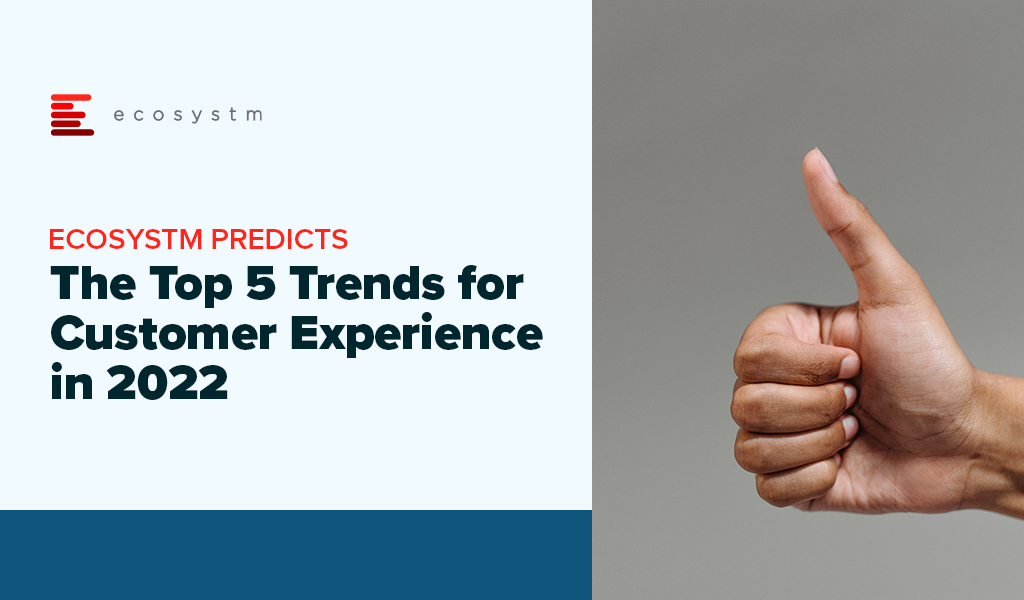The Customer Experience (CX) space is set to witness significant advancements in 2025, particularly with the rise of Agentic AI.
Unlike GenAI, which despite enormous promise, has struggled to deliver scalable solutions, Agentic AI offers dynamic, scalable improvements for brands.
With AI agents and an expanding digital AI workforce, front and back-office automation is becoming more independent.
These AI-driven systems will enable precise information retrieval, intelligent, human-like conversations, autonomous decision-making, and seamless customer interactions without constant intervention from CX teams.
Click here to download “An Agentic AI Perspective” as a PDF.
The Challenges of Traditional Conversational AI
Traditional Conversational AI has faced persistent challenges that have hindered its widespread adoption. Many solutions lack contextual awareness, limiting their ability to engage proactively. Siloed back-end data often restricts these systems from making autonomous decisions, while predefined conversational boundaries prevent seamless, natural interactions.
Despite advancements, organisations deploying Conversational AI continue to encounter significant issues:
- Customers frequently need to rephrase or repeat themselves due to misunderstood intent.
- Incorrect options frustrate users, pushing them to call contact centres.
- Many interactions only partially resolve issues, leaving 40-50% of problems unsolved.
These limitations have slowed adoption, particularly in the Asia Pacific region, where enterprises remain cautious, opting for pilots and tests over large-scale deployments.
Adding to the complexity is the challenge of handling local languages like Thai, Bahasa, Chinese, and Indian languages, as well as nuanced regional English dialects, which AI often struggles to interpret accurately.
Agentic AI: A Transformational Solution
Agentic AI is poised to revolutionise Conversational AI by addressing these longstanding challenges. Unlike traditional systems, Agentic AI offers the ability to retrieve precise information, engage in intelligent, human-like conversations, and make autonomous decisions based on vast amounts of customer metadata.
Agentic AI empowers enterprises to create conversational flows that are not only seamless but also adaptive to context and behaviour.
It enables CX systems to overcome language barriers, handle unstructured data dynamically, and deliver faster, more personalised responses. By doing so, Agentic AI enhances customer satisfaction, drives efficiency, and unlocks the potential for proactive, intelligent engagement at scale.
Success Stories and Adoption Trends
Simpler use cases like balance checks, order confirmations, and structured dialogues have garnered positive feedback. Improvements have been achieved through better conversational design and integrating diverse data into unified repositories.
Agent Assist solutions have seen strong adoption in 2024. New developments in AI agents as a digital workforce are unlocking remarkable outcomes. These agents can analyse unstructured CX data, enabling faster, context-rich conversations.
In 2025, AI agents with agentic capabilities will make independent decisions, learn from context, solve complex problems, and adapt dynamically based on customer interactions.
Preparing For What’s Ahead
CX solution buyers and decision-makers must prepare for the transformative potential of Agentic AI.
- Evaluate vendor offerings. Ask vendors about their Agentic AI solutions and assess their capabilities in delivering desired outcomes.
- Look for end-to-end platforms. Ensure platforms provide tools to design, build, test, deploy, and scale AI agents, workflows, and GenAI applications.
- Focus on orchestration. Choose solutions that integrate seamlessly across channels and applications, ensuring alignment with voice and human collaboration tools.

In my last Ecosystm Insights, I spoke about why organisations need to think about the Voice of the Customer (VoC) quite literally. Organisations need to listen to what their customers are telling them – not just to the survey questions they responded to, answering pre-defined questions that the organisations want to hear about.
The concept of customer feedback is evolving, and how organisations design and manage VoC programs must also change. Technology is now capable of enabling customer teams to tap into all those unsolicited, and often unstructured, raw feedback sources. Think contact centre conversations (calls, chats, chatbots, emails, complaints, call notes), CRM notes, online reviews, social media, etc. Those are all sources of raw customer feedback, waiting to be converted into customer insights.
Organisations can now find the capability of extracting customer insight from raw data across a wide range of solutions, from VoC platforms, data management platforms, contact centre solutions, text analytics players, etc. The expanding tech ecosystem presents opportunities for organisations to enhance their programs. However, navigating this breadth of options can also be confusing as they strive to identify the most suitable tools for their requirements.
As CX programs mature and shift from survey feedback to truly listening to customers, the demand for tech solutions tailored to various needs increases.
Where are tech vendors headed?
As part of my job as CX Consultant & Tech Advisor, I spend a lot of time working with my clients. But I also spend a lot of time speaking with technology vendors, who provide the solutions my clients need. Over the last few weeks and months there’s been a flurry of activity across the CX technology market with lots of product announcements around one specific topic. You guessed it, GenAI.
So, I invested some time in finding out how tech vendors are evolving their offerings. From Medallia, InMoment, Thematic, LiquidVoice, Concentrix, Snowflake, Nice, to Tethr – a broad variety of different vendors, but all with one thing in common; they help analyse customer feedback data.
And I like what I hear. The conversation has not been about GenAI because of GenAI, but about use cases and real-life applications for CX practitioners, including Insights & Research team, Contact Centre, CX, VoC, Digital teams, and so on. The list is long when we include everyone who has a role to play in creating, maintaining, and improving customer experiences.
It’s no wonder that many different vendors have started to embed those capabilities into their solutions and launch new products or features. The tech landscape is becoming increasingly fragmented at this stage.
What are an organisation’s tech options?
- The traditional VoC platform providers typically offer some text analytics capabilities (although not always included in the base price) and have started to tap into the contact centre solutions as well. Some also offer some social media or online review analysis, leaving organisations with a relatively good understanding of customer sentiment and a better understanding of their CX.
- Contact centre solutions are traditionally focused on analysing calls for Quality Assurance (QA) purposes and use surveys for agent coaching. Many contact centre players have evolved their portfolios to include text analytics or conversational intelligence to extract broader customer insights. Although at this stage they’re not always shared with the rest of the organisation (one step at a time…).
- Conversational analytics/intelligence providers have emerged over the last few years and are a powerhouse for contact centre and chatbot conversations. The contact centre really is the treasure trove of customer insights, although vastly underutilised for it so far!
- CRMs are the backbone of the customer experience management toolkit as they hold a vast amount of metadata. They’ve also been able to send surveys for a while now. Analysing unstructured data however (whether survey verbatim or otherwise) isn’t one of their strengths. This leaves organisations with a lot of data but not necessarily insights.
- Social media listening tools are often standalone tools used by the social media teams. There are not many instances of them being used for the analysis of other unstructured feedback.
- Digital/website feedback tools, in line with some of the above, are centred around collecting feedback, not necessarily analysing the unstructured feedback.
- Pure text analytics players are traditionally focused on analysing surveys verbatim. As this is their core offering, they tend to be proficient in it and have started to broaden their portfolios to include other unstructured feedback sources.
- Customer Data Platforms (CDP)/ Data Management Platforms (DMP) are more focused on quantitative data about customers and their experiences. Although many speak about their ability to analyse unstructured feedback as well, it doesn’t appear to be their strengths.
Conclusion
But what does that leave organisations with? Apart from very confused tech users trying to find the right solution for their organisation.
At this stage, there is immense market fragmentation, with many vendors from different core capabilities starting to incorporate capabilities to analyse unstructured data in the wake of the GenAI boom. However, a market convergence is expected.
While we watch how the market unfolds, one thing is certain. Organisations and customer teams will need to adjust – and that includes the tech stack as well as the CX program set up. With customer feedback now coming from anywhere within or outside the organisation, there is a need for a consolidated source of truth to make sense of it all and move from raw data to customer insights. While organisations will benefit immensely from a consolidated customer data repository, it’s also crucial to break down organisational silos at the same time and democratise insights as widely as possible to enable informed decision-making.

Since early 2020 nearly all organisations have strengthened their online presence and commerce abilities – irrespective of their industry. They have come to terms with the fact that the ability to win and retain customers, is largely linked to the digital customer experience (CX) they are able to deliver.
They have invested heavily in their CX roadmaps and technologies; but will find themselves solving for the same challenges they have faced the last 2 years – continued growth of digital experiences; gaining insights from customer data; customer churn; and catering to customer channel preferences.
2022 will be the time to consolidate and build the capabilities required to analyse the immense amount of customer data that they have access to – to finally be able to offer personalised customer experience.
Read on to find out what Ecosystm Advisors Audrey William and Tim Sheedy think will be the leading CX trends in 2022.
Click here to download Ecosystm Predicts: The Top 5 Trends for Customer Experience in 2022 as a PDF






















